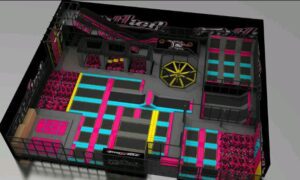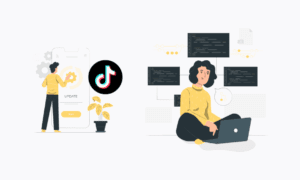Interviewer: Amazon made global headlines when it announced its entry into automotive retail. You were at the center of this transformation. Can you share your role and responsibilities during this period?
Expert: I joined Amazon in January 2023 as a Senior Product Manager-Technical based in New York. I was hired to define and execute the three-year product strategy for checkout and post-purchase customer experience, specifically for the automotive retail program. This was part of a $20 billion market opportunity, and my focus was on building seamless digital journeys for both customers and dealers.
Interviewer: The traditional car buying process is notoriously complex. What challenges did you set out to solve?
Expert: There were plenty of challenges to solve – time consuming documentation & paperwork, long pickup wait times, etc. If you go to a traditional dealership to buy a car today, even if you have finalized the car you are interested to purchase, you will end up spending ~4 hours at the dealership. This was a big customer pain point. Our goal was to bring that down dramatically, and we succeeded in reducing it by 85% through digital product and process redesign. On the dealer side, we focused on integrating tools that they used into Amazon Seller Central so they could manage order fulfillment, appointment scheduling, and payments with ease. On the customer side, we focused on improving communications and brought transparency to the process and purchase steps.
Interviewer: Could you highlight some of the key product innovations you introduced at Amazon?
Expert: Certainly. One major milestone was enabling customers to complete $50,000-plus car transactions directly on Amazon’s app and website, supported by end-to-end online loan applications and in-store pickup. If you think about it, Amazon traditionally support orders that have value anywhere close to ~$50,000. However, for our car shoppers this is a basic expectation. In the current interest rate environment, it is not uncommon to see car shoppers making cash purchases. However, to support this group of customers, which was not small, we had to rethink our payment systems, processes, and risk considerations. Additionally, I partnered with third-party digital retail SaaS providers to integrate APIs for pricing, order tracking, scheduling, and payment processing.
Interviewer: What kind of impact did these initiatives at Amazon’s automotive retail create for the Automotive industry?
Expert: We successfully rolled out the program to select cities and with our initial selection of dealers. Overall, this program has been successful and has helped garner learning that we can now leverage to scale the program across the US. Traditional industries like automotive sales have been slow to adapt technology. This Amazon Auto initiative is a leap-frog and industry defining moment. The automotive e-commerce is $50bn and is fast growing. Given how Amazon has approached this space and tried to streamline the automotive purchase, my expectations is that other industry participants such as dealers, OEMs would follow suit. It is exciting to be driving the initiative that is fueling this industry transformation.
Interviewer: You’re often described as an expert in Digital Product Growth & Analytics. How did that expertise influence your work at Amazon?
Expert: My expertise is in combining data-driven insights with product strategy to unlock growth. At Amazon, this meant analyzing user journeys, building data driven hypotheis to optimize checkout experience and applying available customer research data objectively to validate every decision. For example, reducing the dealership wait time was not just about customer convenience—it should also improve completion rates and dealer efficiency, creating value across the board.
Interviewer: From your perspective, what does the future of automotive e-commerce look like?
Expert: The industry is at the start of a major shift. Consumers expect the same seamless experience when buying a car as they do when purchasing other products online. Over time, we’ll see deeper integration of financing, insurance, and ownership services, all delivered digitally. The winners will be companies that reduce friction, build trust, and deliver experiences where technology feels effortless and invisible.
Interviewer: Finally, what do you believe sets your approach apart when driving product-led growth at scale?
Expert: I think it comes down to a balanced skill set of strategy and execution. I don’t just define product roadmaps—I build business hypotheses, run experiments to validate these, and work closely with engineering and design teams to translate ideas into real-world features. At Amazon, that approach allowed us to transform one of the most complex, high-value offline purchases into a scalable digital journey that felt simple and intuitive for customers.
Closing Note
This interview underscores how data-driven strategy, analytics, and customer-centric product development are reshaping industries once thought resistant to digital disruption. Amazon’s automotive retail initiative highlights the growing role of experts who can engineer growth at scale and redefine what’s possible in digital commerce.































